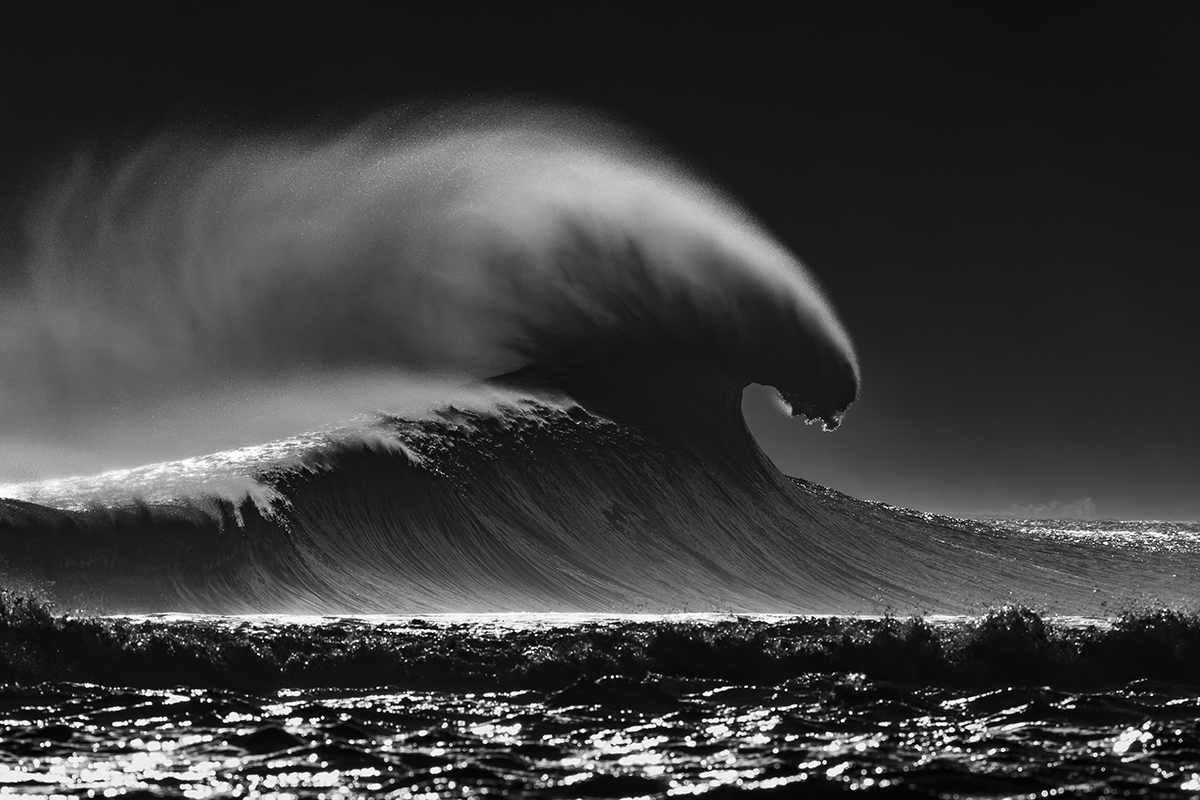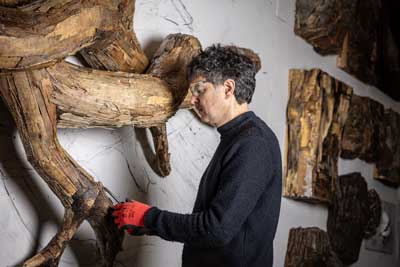
Photo by Ben Thouard
Creating a sustainable blue economy – meaning we can invest in businesses directly related to the oceans while avoiding negative impact – is one of the most important tasks on humankind’s to-do list. Below, LUX speaks with Muriel Danis of Deutsche Bank about the challenges. Chris Stokel-Walker also speaks to entrepreneurs trying to make a positive impact in the ocean space
Muriel Danis on building investment opportunities in the sustainable blue economy

Muriel Danis
One of the challenges faced by investors interested in the sustainable blue economy is that it is an emerging landscape. “It’s a very nascent space,” says Muriel Danis, Global Head of Product Platforms and Sustainable Solutions at Deutsche Bank’s International Private Bank. “There are few products dedicated to the blue economy. What we see more often, especially in the private markets space, is a broader, impact approach to investing, with a sub-allocation for ocean-based investments.”
Danis is overhauling the products at Deutsche Bank by making sustainability a central part of the tenet. She is incorporating ESG qualitative and quantitative factors into the product development process to meet regulatory requirements and help identify “best in class” managers and solutions. That is easier said than done. Most liquid products available today focus primarily on what Danis calls a “do no harm approach”: they tend to exclude from investment portfolios any sectors or activities that have a materially negative impact on the oceans. However, in private markets there may be more product opportunities able to deliver material and measurable positive outcomes. “We are seeing a number of VC funds that are directly investing in technologies and capabilities that protect marine biodiversity,” says Danis. “By targeting overfishing, ocean pollution and climate change, they are supporting a sustainable blue economy.”

Photo by Ben Thouard
“We think this will be an expanding universe,” adds Danis. That’s partly driven by investor demand, and partly by increased policy action. A good example is the recent UN High Seas Treaty, which aims to place 30 per cent of the seas into protected areas by 2030. This will support increased finance flows into sectors of the sustainable blue economy impacted by the 30 x 30 agreement. “As the market becomes more mature,” says Danis, “we will see more need for financing to support the transition of business models to what I would call a blue or green model.”
Danis is spearheading that transition by making connections to blue economy pioneers. One such opportunity was the DB x ORRAA Ocean Conference hosted in 2022 in Mallorca. In the first conference of its kind, Deutsche Bank invited a range of companies and their founders, including some of those featured below, to demystify the sustainable blue economy and show how private capital can help achieve positive ocean impact at scale.
Entrepreneurs on creating businesses for the good of the oceans
A new generation of individuals are setting up companies worldwide to radically overhaul how we interact with our oceans, and help save our planet while building a sustainable economy

Cristina Aleixendri Muñoz
Replacing ship engines with sails
Cristina Aleixendri Muñoz
Co-founder, bound4blue, Barcelona
Cristina Aleixendri Muñoz always wanted to be a doctor. “I thought the only way to do good in theworld was to save lives,” she says. But a chance conversation with a teacher who suggested engineering changed her path.
Muñoz became an aeronautical engineer, working on planes and space shuttles before pivoting to the maritime industry. That aerodynamic expertise helped when she launched bound4blue with her co-founders. The challenge was to overcome the shipping industry’s fuel-consumption problem – shipping alone accounts for 2.5 per cent of the world’s carbon emissions.
“I think engineering can help solve today’s hardest problems, make sustainability profitable and be something that can be developed and implemented,” says Muñoz. The company has developed a wind-propelled eSAIL that can reduce emissions by up to 40 per cent, and which it has tested on three ships. “The intention is for around 80 per cent of the global fleet to benefit from this type of solution,” she says.
Marine-friendly robotics
Liane Thompson
Co-founder, Aquaai, California and Norway

Liane Thompson
As a journalist for The New York Times, Liane Thompson used to travel the world. Once, while she was in South Africa, she reported on an entrepreneur called Simeon Pieterkosky. Little did she know then that she would reconnect with Pieterkosky around a decade later in 2014 to develop Aquaai.
The husband-and-wife’s marine-robotics company builds affordable Autonomous Underwater Vehicles (AUVs), which it calls Nammu. These are shaped like fish and are used to gather environmental data deep underwater, without intruding on the marine life living there. The AUVs are 3D printed and come installed with off-the-shelf cameras and sensors – deliberately so, says Thompson, so that people can build their own in communities that need them most.
And that need is ever increasing, says Thompson, “given superstorms, floods, the proteins and food sources coming out of underwater farming, and the need to protect marine habitats and corals.”
Biodiversity-friendly coastal concrete
Ido Sella
Co-founder, ECOncrete, Tel Aviv

Ido Sella
Marine biologist Dr Ido Sella has been fixated on the impact of coastal construction on the marine environment for more than 20 years. His bugbear? Concrete, as it doesn’t support the same biodiversity as other substrates. In an ideal world, natural reef would mark out ports and create promontories – but that won’t happen. So Sella worked to develop a material that would be better than the concrete used in 70 per cent of coastal infrastructure.
And so, in 2012, ECOncrete was born. A decade ago, the company started experimenting in the Mediterranean and the Red Sea. The findings were shocking: the mix itself was an issue, as was the surface and the structural strength. ECOncrete solves all three problems: its Admix can be added to regular concrete to provide a better chemical balance for marine life, its texture agents help marine life cling to the structures and their moulds help create ecological niches and strengthen the structures.
ECOncrete is now used in breakwaters and ports globally. “There is a real drive from the industry to look for these solutions,” says Sella.

Photo by Ben Thouard
Large-scale coral regrowth
Sam Teicher
Co-founder, Coral Vita, Freeport

Sam Teicher
At the age of 13, Sam Teicher gained a scuba- diving certification. “I’ve loved the ocean and nature my whole life,” he says. “As a kid from Washington D.C., I grew up imagining I was going to become a coral farmer.” Teicher studied the environment and climate change in college, then grad school. It was through working at a friend’s NGO between courses that he was first introduced to coral restoration – and it became his life’s work.
Coral Vita, the company Teicher co-founded in 2019, grows coral 50 times faster than it would grow in nature – so it can be replenished as modern life diminishes our reserves of the natural resource. Started with a $1,000 grant from Yale, where Teicher and his co-founder met, Coral Vita is now behind the world’s first commercial land-based coral-reef farm, in Freeport, Grand Bahama, where the coral grown is being used to replenish the reef. In 2021, the company won Prince William’s inaugural Revive Our Oceans Earthshot Prize. “We hope to kick-start the whole restoration economy,” says Teicher.
Biodegradable packaging and materials
Jack Sieff
Corporate Development Manager, Polymateria, London

Jack Sieff
Plastic waste is a major problem for the world’s oceans, strangling marine life and jeopardising biodiversity systems. There is now an estimated 30 million tonnes of plastic waste in the world’s sea and oceans.
Founded in 2015 by Jack Sieff’s father Jonathan, Polymateria has developed biodegradable alternatives to plastic. In 2020, Polymateria reached a major milestone, achieving certified biodegradation of the most commonly littered forms of plastic packaging in real-world conditions, all without creating the harmful microplastics the world is seeking to avoid. “Since the launch of that standard, we’ve seen a domino effect,” Sieff says, as many countries are adopting similar standards.
Polymateria’s biodegradable materials are now utilised in items such as masks and wipes, along with other uses. The company raised £15 million in its Series-A funding before the pandemic hit, and is about to close out a Series-B round, bringing in a further £20 million.
Autonomous sailing fleet that creates power
Ben Medland
Founder, DRIFT Energy, London

Ben Medland
Engineer Ben Medland didn’t know how to answer when his eight-year-old son asked him, “Daddy, why is the climate broken? And how can we fix it?” Medland’s son had been reading about a recent COP conference, and had noticed that the nearby wind farm just wasn’t moving. What could be done? Medland vowed to try to change things by turning the 70 per cent of the planet that traditional renewables don’t reach – the world’s oceans – into an energy source. He admits that it is a “crazy” idea, but it is one that works.
DRIFT, founded in 2021, creates sailboats, augmented with turbines, which will go through the water, guided by AI to inform them of the most beneficial route to pick up power. The tides themselves generate energy into the turbine, which is stored onboard as green hydrogen using a process called electrolysis.
Better yet, that onboard green energy can then be used wherever the sailboats end up docking – bringing green energy to the parts of the world that need it the most.
This article was first published in the Deustche Bank Supplement in the Spring/Summer 2023 issue of LUX








